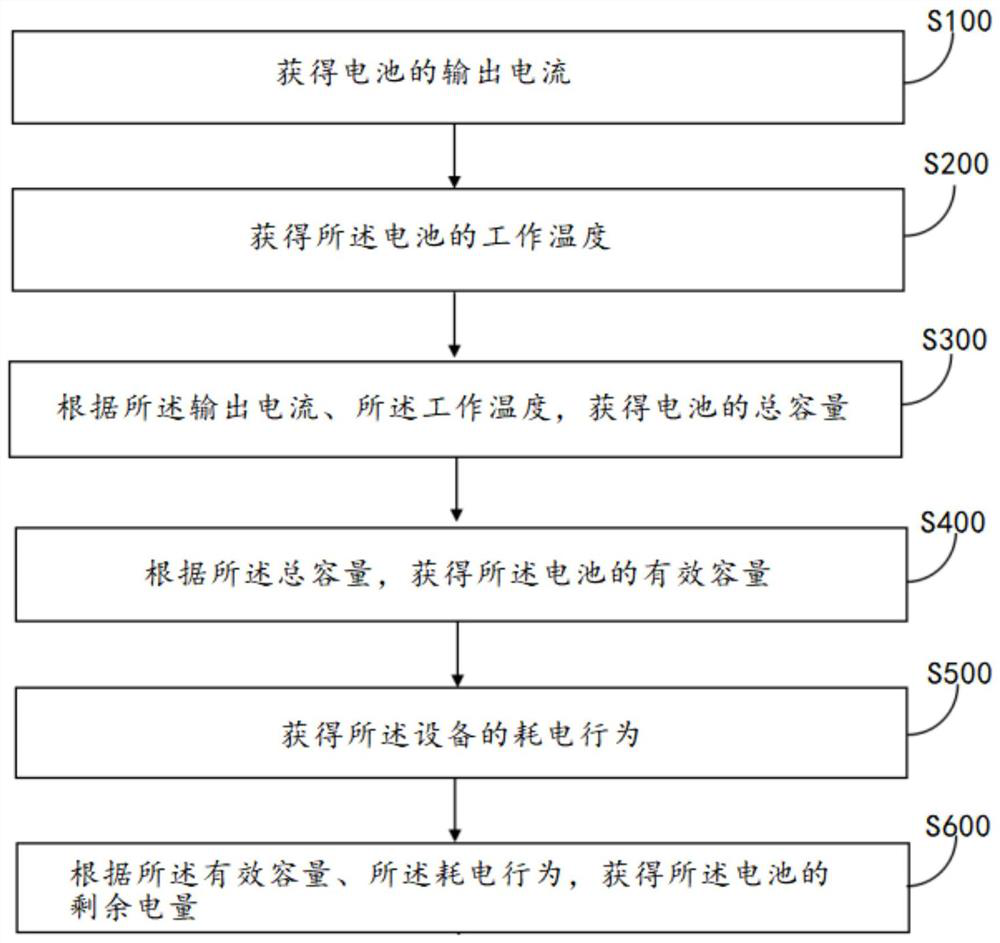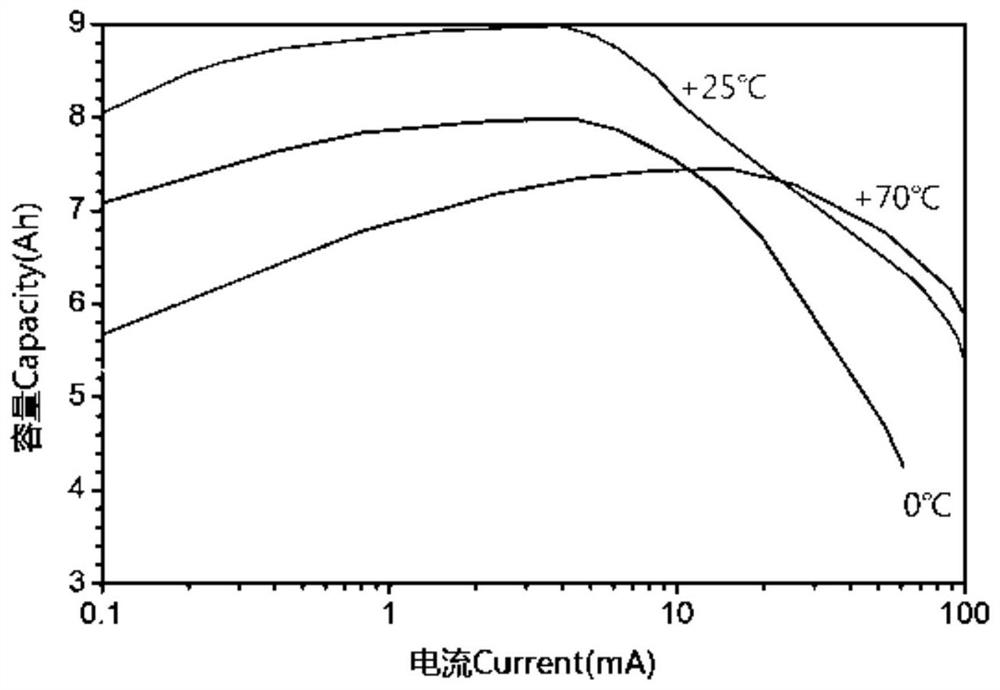Battery electric quantity statistics method and device
A statistical method and technology of battery power, which can be used in measuring devices, measuring electrical variables, measuring electricity, etc., and can solve problems such as inaccurate battery power statistics.
- Summary
- Abstract
- Description
- Claims
- Application Information
AI Technical Summary
Problems solved by technology
Method used
Image
Examples
Embodiment 1
[0024] The embodiment of the present invention provides a battery power statistics method, please refer to the attached Figure 1-2 , the method includes:
[0025] Step S100: obtaining the output current of the battery;
[0026] Step S200: Obtain the working temperature of the battery;
[0027] Specifically, the device is connected to the battery, and the battery only provides electrical energy for the normal operation of the device. When the device is working, the output current of the battery and the ambient temperature when the battery is working are detected, wherein the working temperature is the ambient temperature when the battery is working.
[0028] Step S300: Obtain the total capacity of the battery according to the output current and the operating temperature;
[0029] Wherein, step S300 includes:
[0030] Step S310: Obtain the correspondence between the total capacity and the output current at different temperatures;
[0031] Step S320: Obtain the total capaci...
PUM
 Login to View More
Login to View More Abstract
Description
Claims
Application Information
 Login to View More
Login to View More - R&D
- Intellectual Property
- Life Sciences
- Materials
- Tech Scout
- Unparalleled Data Quality
- Higher Quality Content
- 60% Fewer Hallucinations
Browse by: Latest US Patents, China's latest patents, Technical Efficacy Thesaurus, Application Domain, Technology Topic, Popular Technical Reports.
© 2025 PatSnap. All rights reserved.Legal|Privacy policy|Modern Slavery Act Transparency Statement|Sitemap|About US| Contact US: help@patsnap.com


